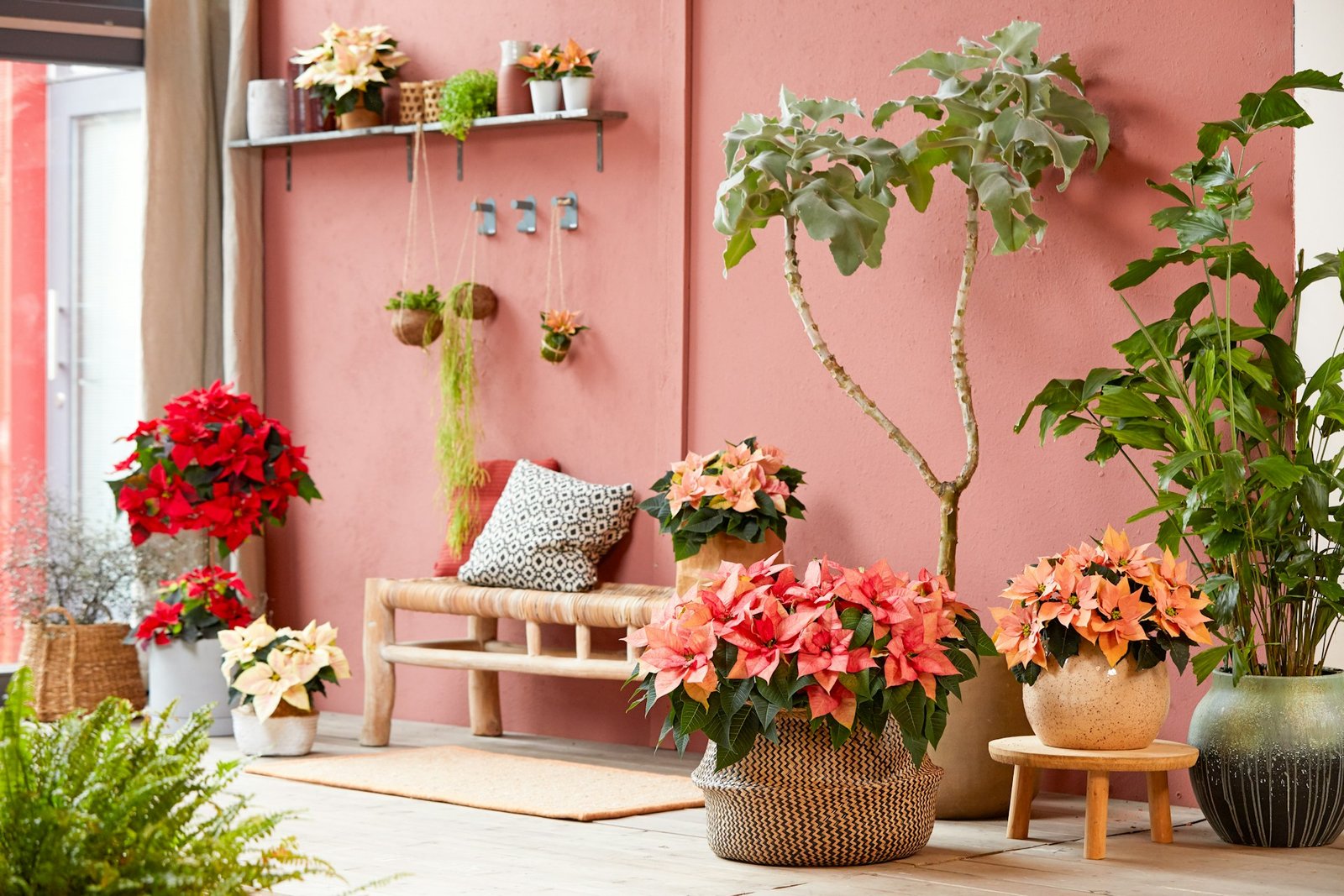Succulents are more than just plants. They’re compact, charming, and a natural fit for people who crave greenery without the mess or maintenance.
As we head into 2025, trendy succulent wall decor is taking over urban interiors — turning blank walls into vibrant living art.
Whether you’re outfitting a small apartment or refreshing your home office, this guide has everything you need to know.
From the best succulents for vertical gardening to lighting, care, design tips, and DIY options — it’s all here in one place.
Why Succulent Wall Decor Works So Well for Modern Spaces
Let’s face it: most people don’t have space for a jungle of houseplants. Between pets, furniture, and limited light, many plant lovers feel stuck. That’s where succulent walls come in. They:
- Save space by going vertical
- Bring life to bland walls
- Require minimal watering
- Fit into any interior theme
- Help purify air and boost calm
Even in a studio apartment or tight hallway, you can create a lush, green atmosphere that’s low-maintenance and eye-catching.
10 Best Succulents for Vertical Wall Displays
Choosing the right succulents is key to a long-lasting and beautiful wall garden. The ideal candidates should be compact, shallow-rooted, and tolerant of variable lighting and airflow. Here’s a deeper dive into the best options:
1. Echeveria
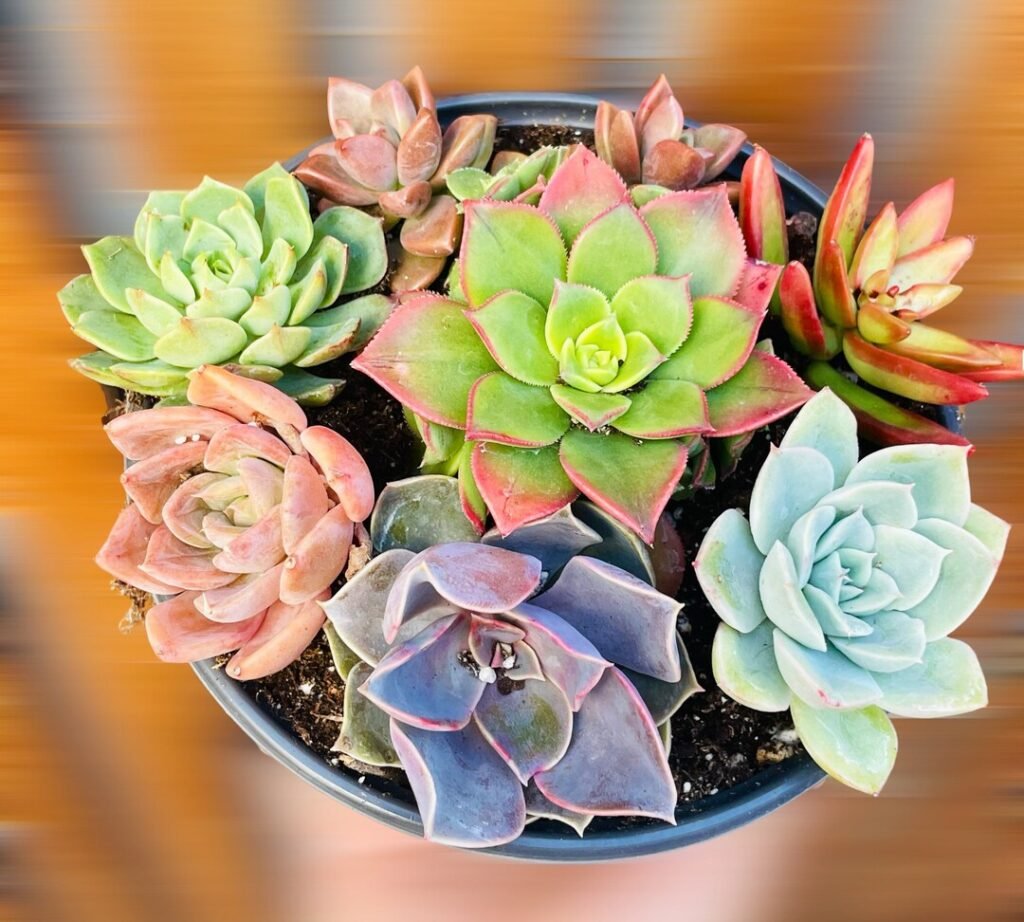
Echeverias are beloved for their symmetrical rosette shapes and pastel hues. They range from pale pinks and blues to silvery greens, making them a versatile choice for decorative arrangements.
These plants hold their form beautifully and don’t grow tall, which keeps your wall display neat and sculptural.
They’re perfect for centerpieces in framed wall gardens or tiled in grids for modern aesthetics.
2. Sedum (Stonecrop)
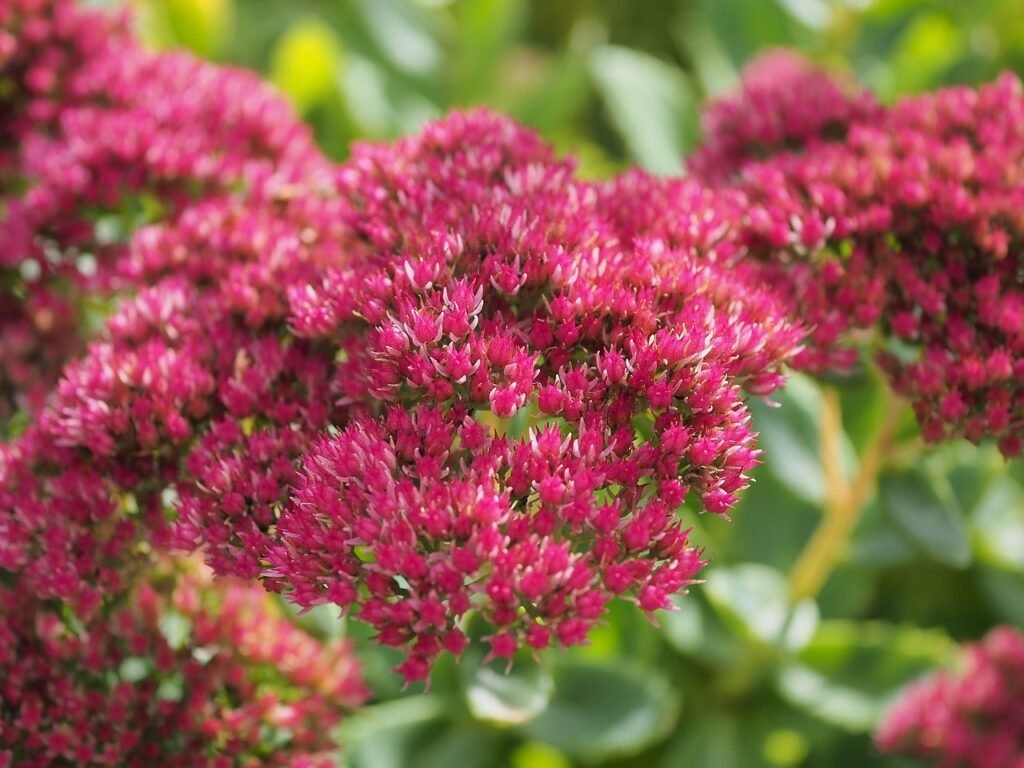
Sedums come in trailing and upright varieties, offering great flexibility. Sedum morganianum (Burro’s Tail) drapes elegantly over the edges, adding movement and softness to your wall display.
Upright Sedums work well to provide structure in mixed compositions. Their drought-tolerance and small root systems make them ideal for pocket planters.
3. Crassula (Jade Plant)
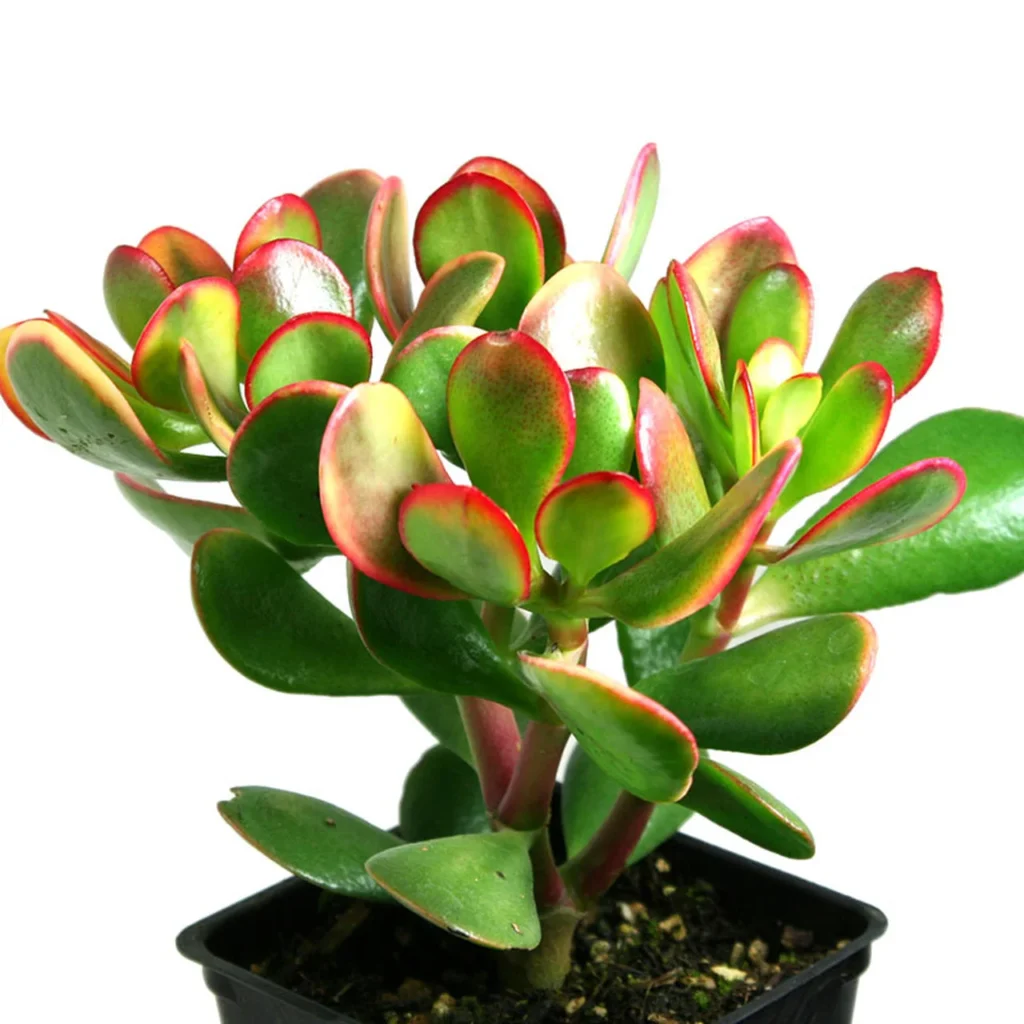
Jade plants are a classic succulent, but smaller cultivars like Crassula ovata ‘Gollum’ are especially great for vertical setups.
They’re sculptural and can be shaped over time. Their thick leaves retain water efficiently, and they thrive in bright, indirect light. Use them for contrast or anchor points in geometric layouts.
4. Haworthia
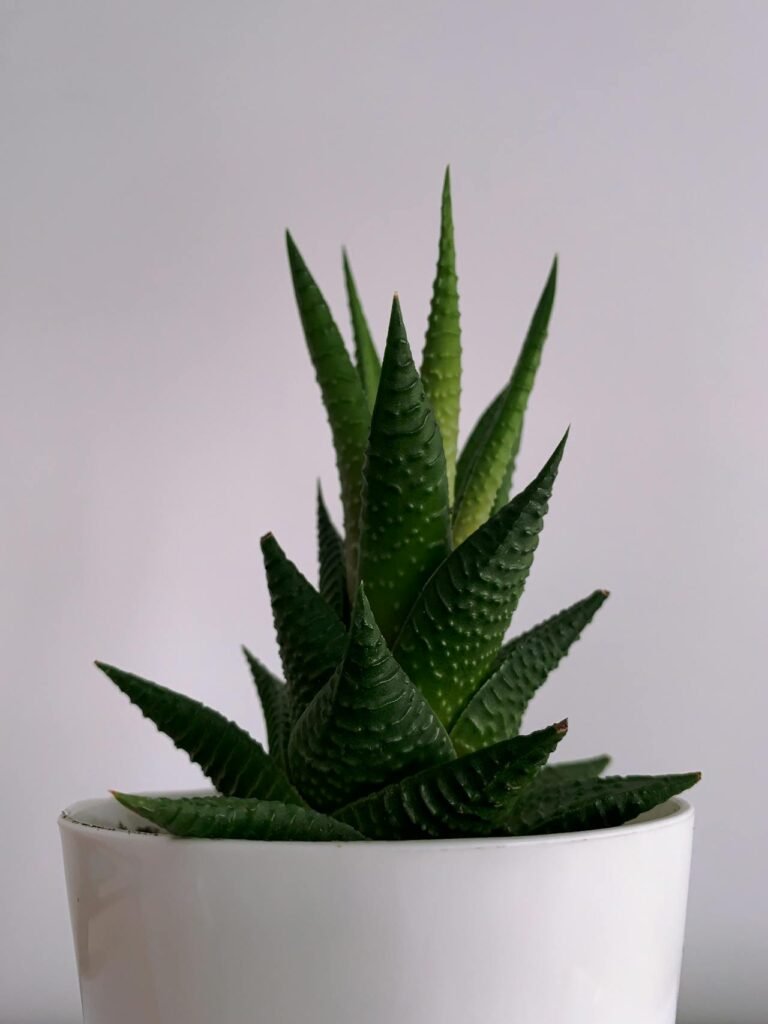
Haworthia varieties are fantastic for indoor vertical gardens, especially in apartments with limited light. Their dark green or striped spiky leaves bring depth and texture to a display.
They stay small and thrive in low to moderate light, making them a favorite for shaded wall areas like hallways or offices.
5. Sempervivum (Hens and Chicks)
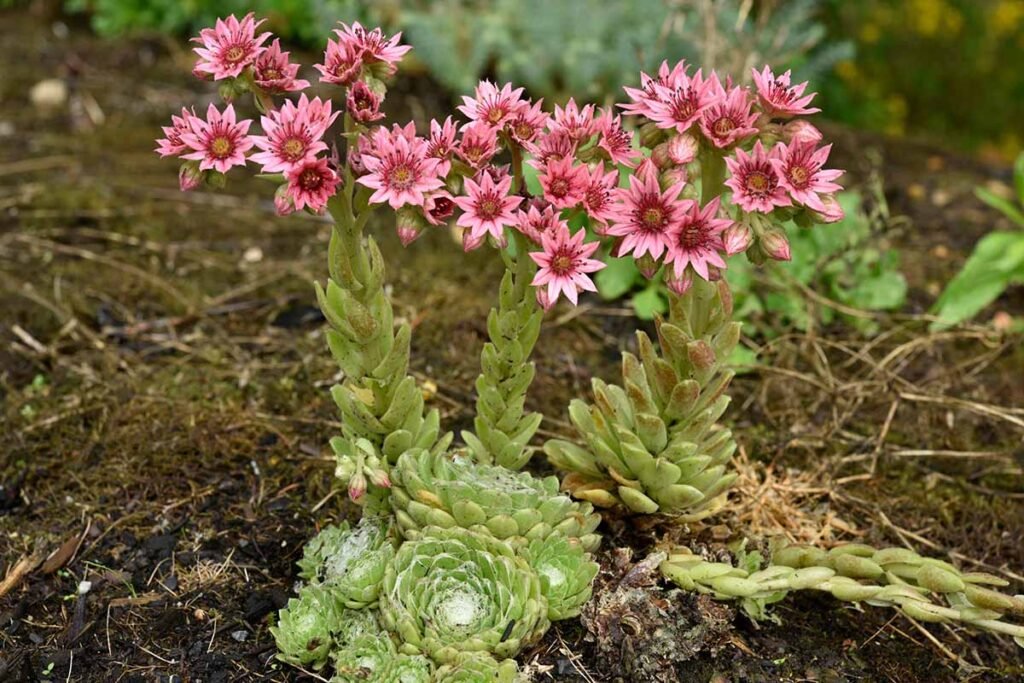
These alpine succulents are known for forming rosettes with baby offshoots that cluster around the mother plant. They’re hardy, cold-tolerant, and often come in rich red, purple, and green tones.
They stay compact and shallow-rooted—great for wall inserts and modular panel systems.
6. Graptopetalum
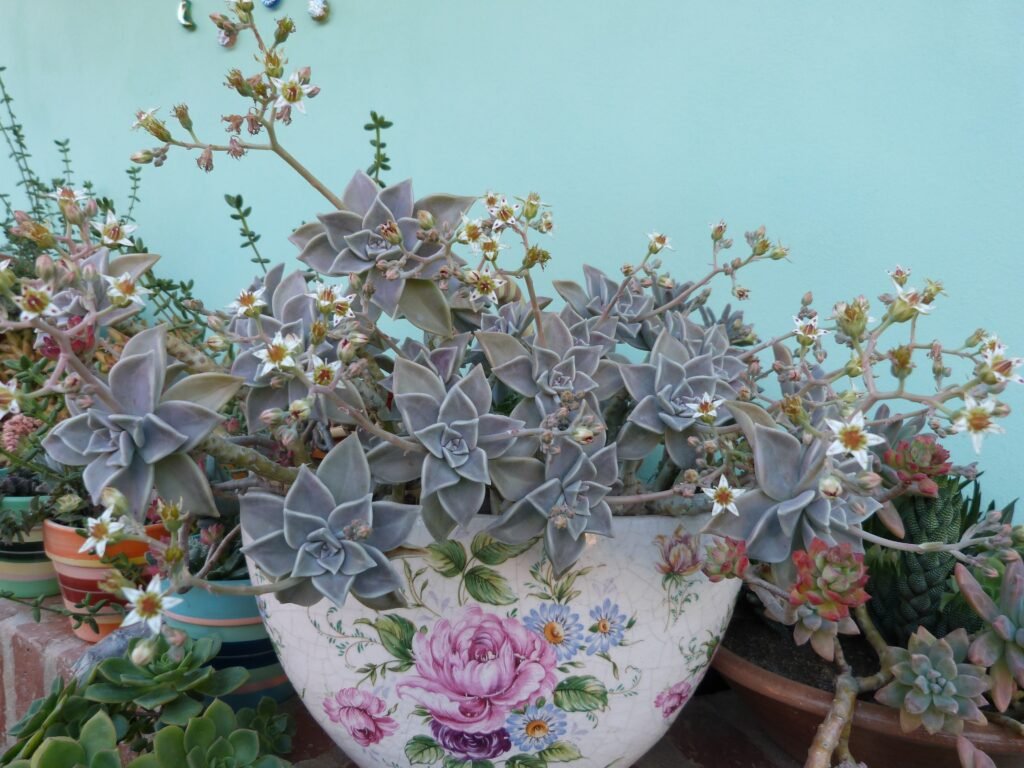
With muted pastel tones and delicate leaf patterns, Graptopetalum brings a soft, romantic vibe to succulent walls. They’re similar to Echeveria but slightly more trailing.
They tolerate slight shade but prefer bright light to maintain their colors. Place them where they can spill over the edge gently.
7. Kalanchoe tomentosa (Panda Plant)
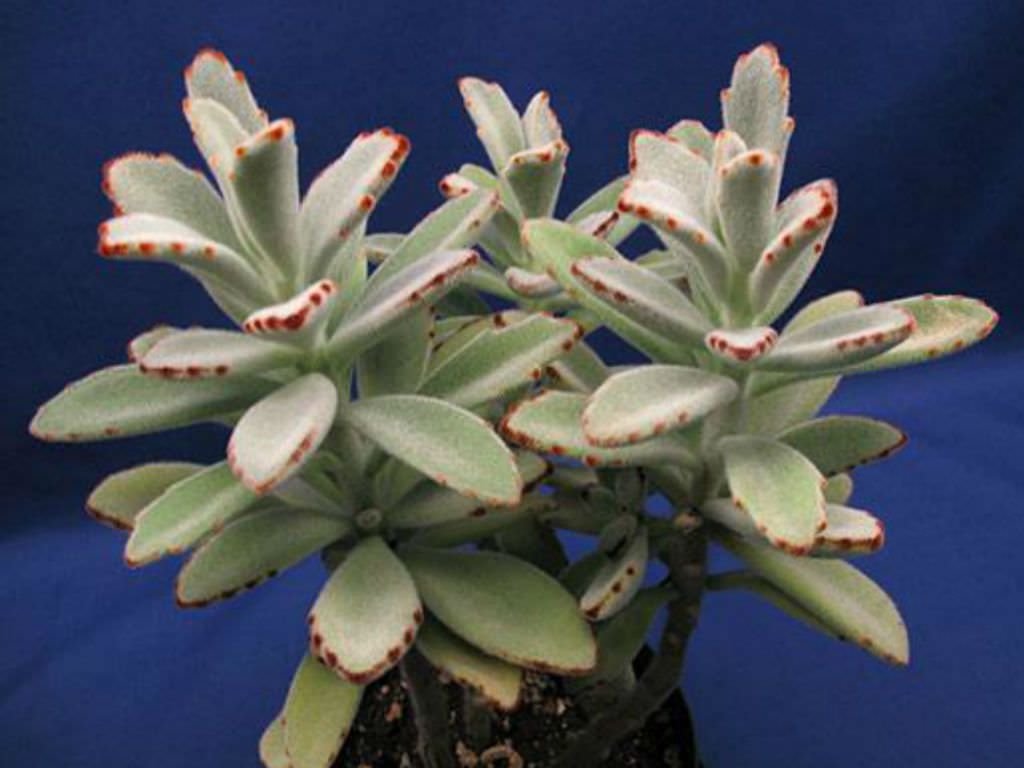
This fuzzy, whimsical succulent has soft, gray-green leaves rimmed with brown or rust-colored edges. It’s a tactile plant that adds visual warmth to colder, modern displays.
The Panda Plant works best in deeper pockets or wall planters with airflow. It tolerates neglect and low humidity well.
8. Portulacaria afra (Elephant Bush)
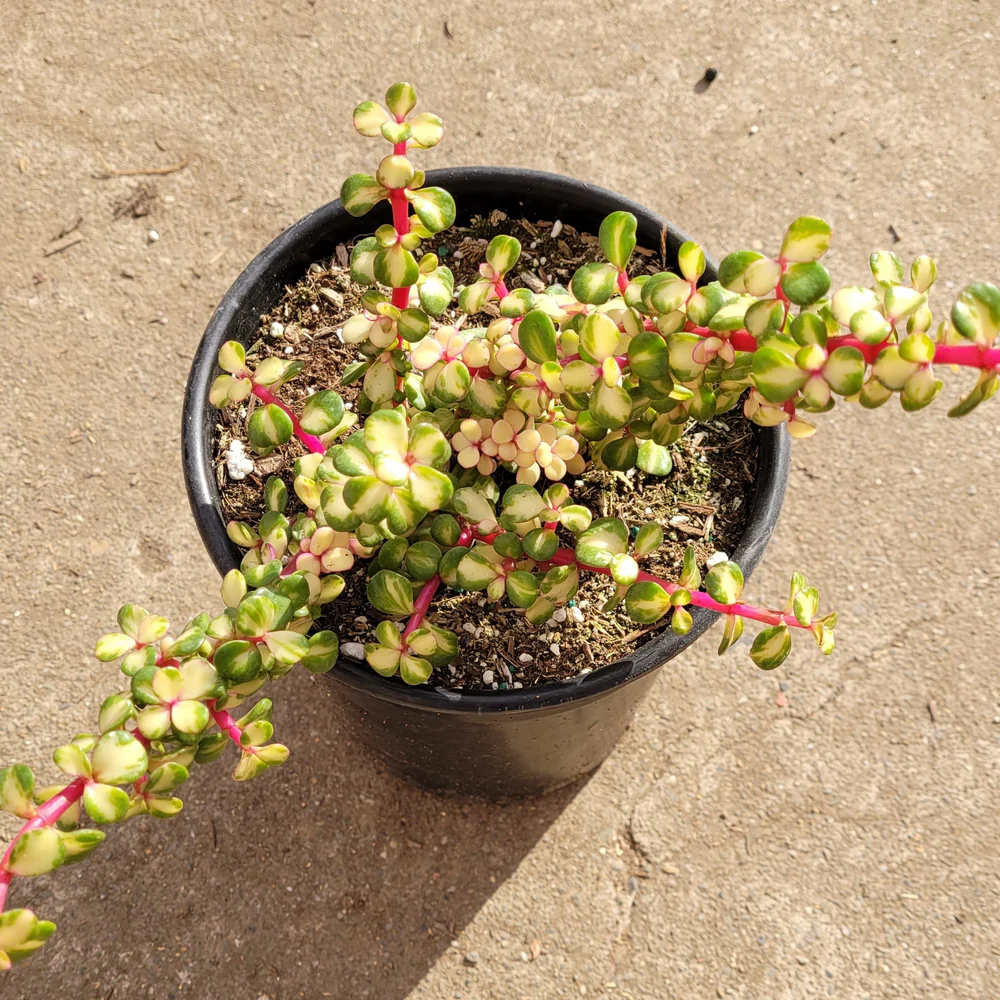
Miniature, fast-growing, and easy to shape—this succulent can be pruned like bonsai to fit your design.The reddish stems and round green leaves add texture and contrast to other smoother-leaved succulents.
Elephant Bush thrives in bright light and is great for taller wall designs or as a vertical accent.
9. Aloe aristata (Lace Aloe)
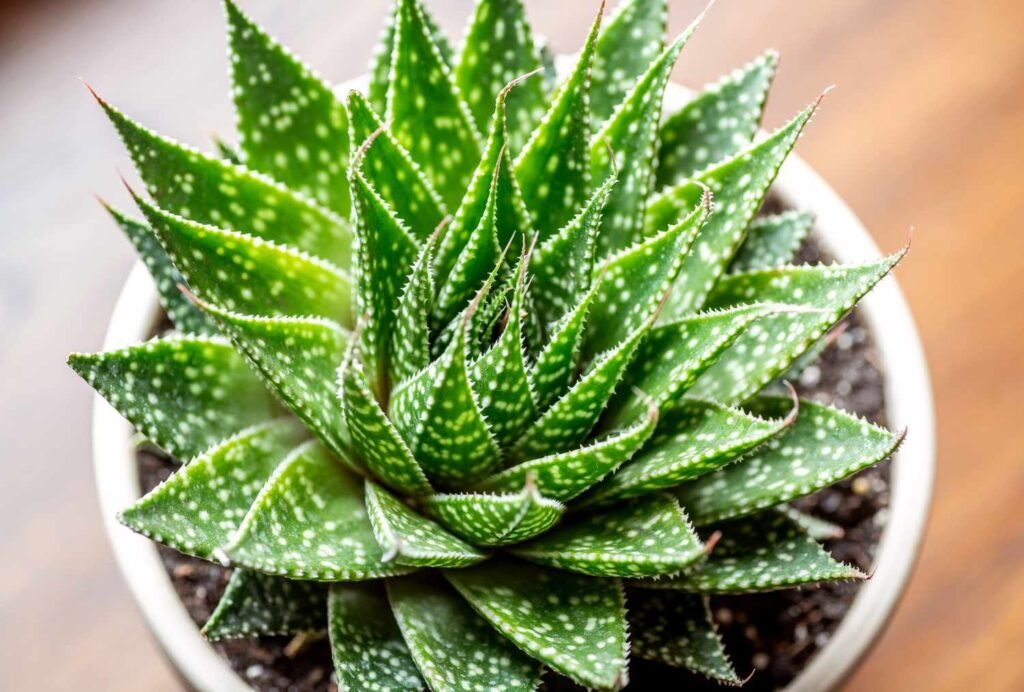
Unlike standard aloe, this variety is small, clump-forming, and slow-growing. Its rosettes have firm, pointed leaves with white spots and fringed edges, making it both elegant and edgy.
Use it to introduce spiky structure in between softer plants like Sedum or Graptopetalum.
10. String of Pearls / String of Bananas
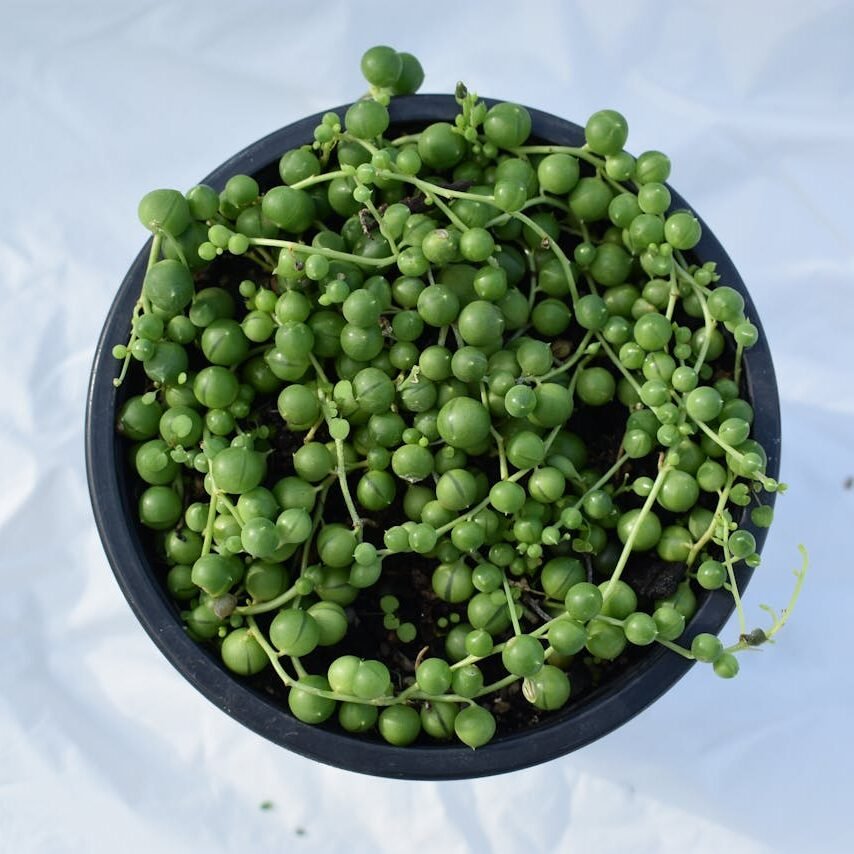
These trailing succulents are ideal for the edges of vertical gardens or hanging components of your wall.
String of Pearls has spherical leaves, while String of Bananas has curved banana-shaped leaves that cascade beautifully. They require good airflow and bright indirect light. Avoid overwatering, as their roots are quite sensitive.
Types of Trendy Succulent Wall Decor
Succulent wall decor has evolved beyond simple plant boards. In 2025, the focus is on flexibility, creativity, and personal style. Here are some trendy styles that work beautifully in modern interiors:
1. Framed Living Art
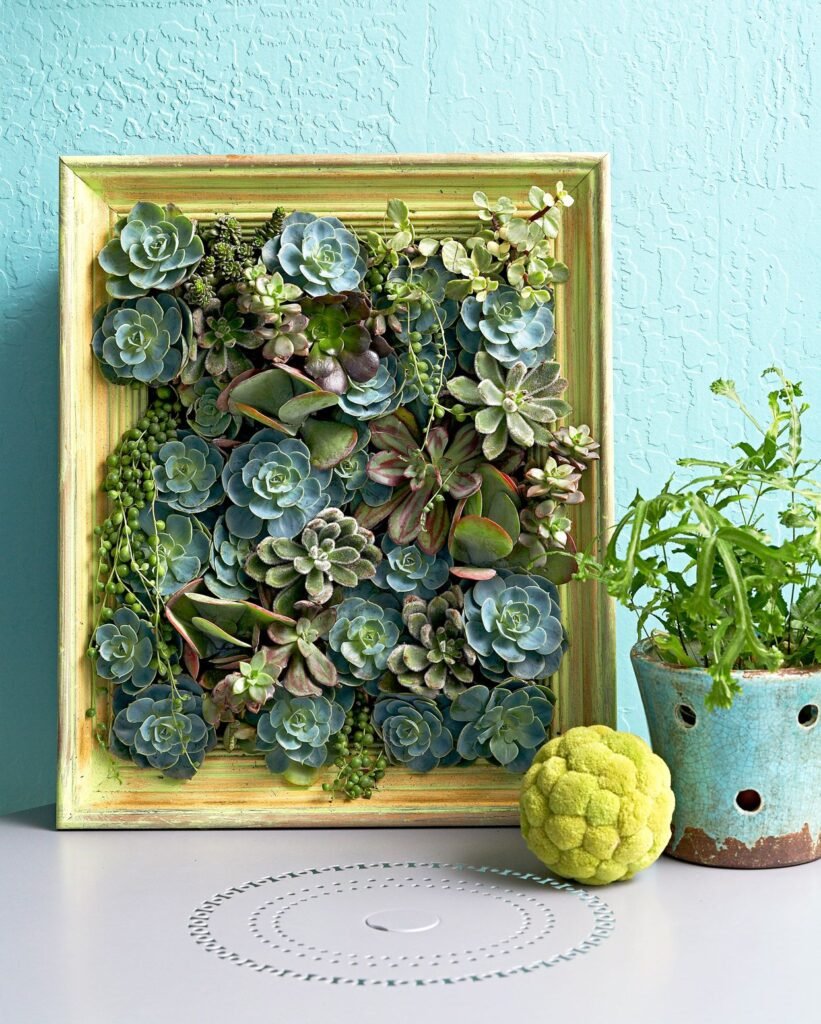
This is where succulents become actual artwork. A wooden or metal frame filled with mesh and soil allows small succulents to grow like a vertical garden painting.
It’s perfect for living rooms, entryways, or as a focal point on an accent wall. You can even switch out the plants seasonally to refresh your decor.
2. Hanging Pocket Planters
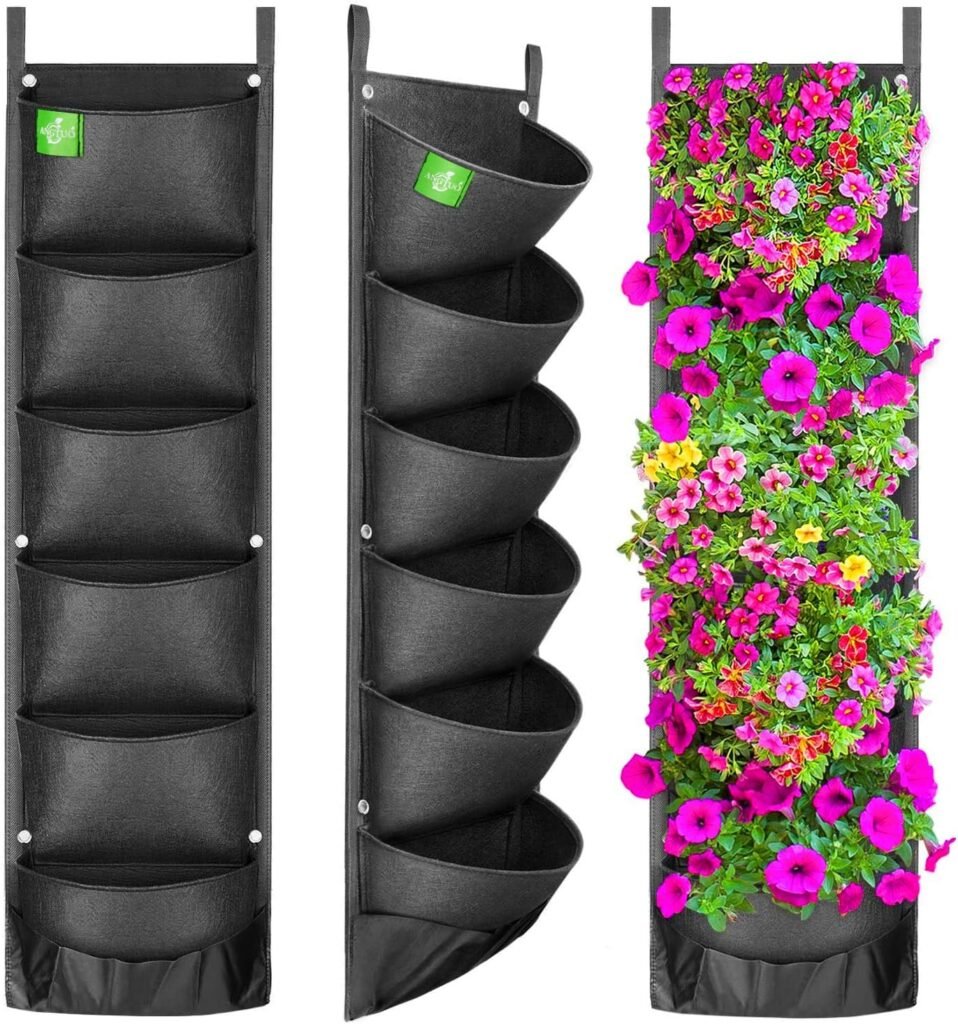
Fabric or felt wall hangings with individual planting pockets make vertical gardening super simple. They’re affordable, renter-friendly, and lightweight.
Ideal for kitchens, balconies, or narrow hallway spaces. Some styles combine pockets with moisture-wicking material to prevent wall damage.
3. Modular Living Panels
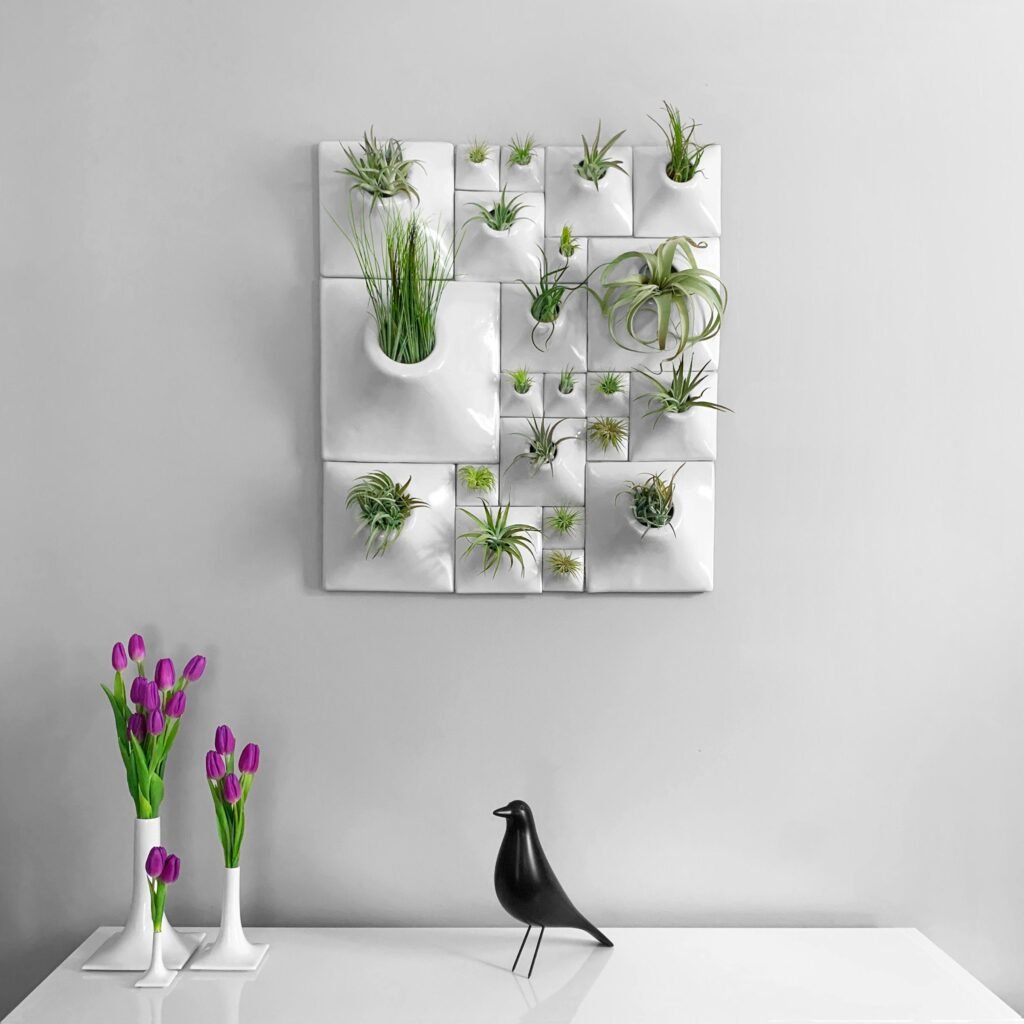
These are perfect for larger installations. Modular units click together to form living walls of any size. They often come with built-in irrigation and drainage systems.
Great for a green home office backdrop, a full feature wall in the living room, or even on a covered balcony.
4. Hanging Pots
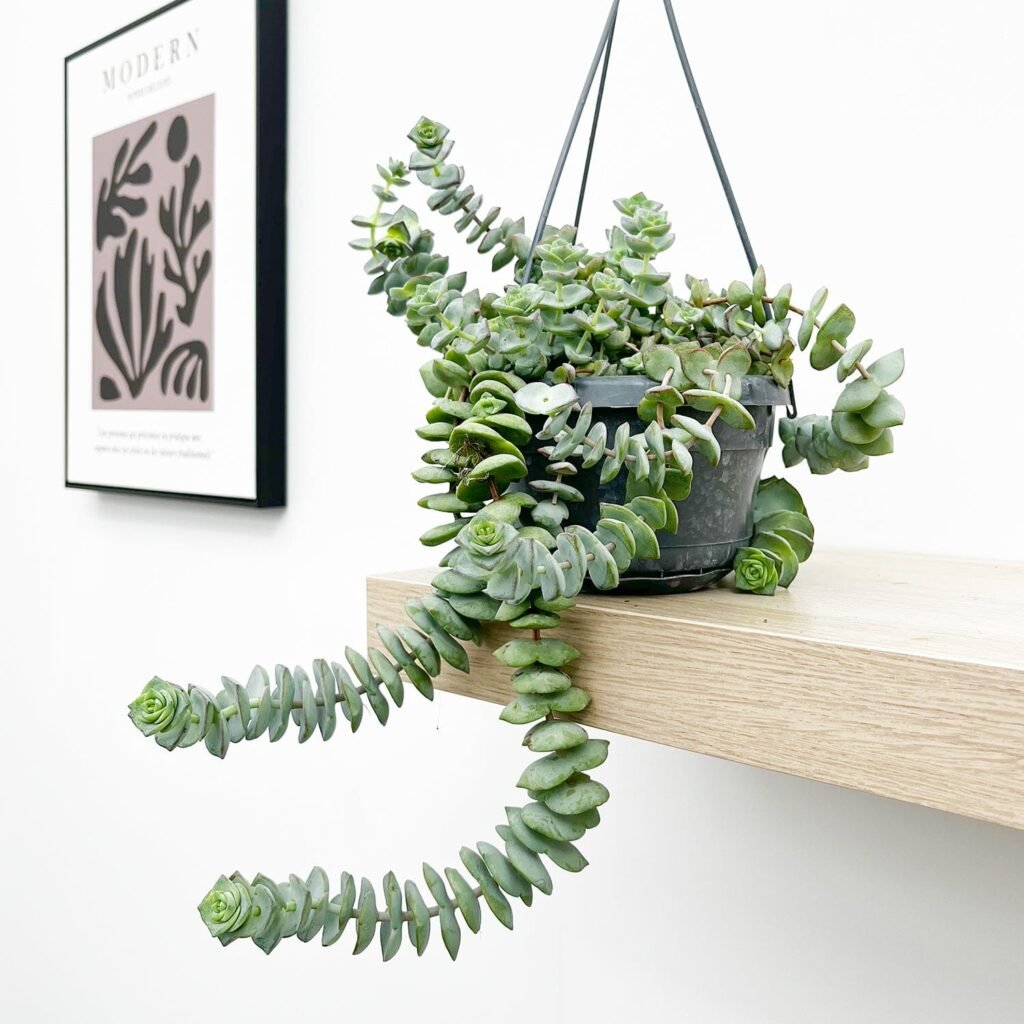
Use hanging planters with succulents, small trailing vines, and even lights or art to create a multipurpose plant wall that reflects your personal style.
5. Upcycled and DIY Decor
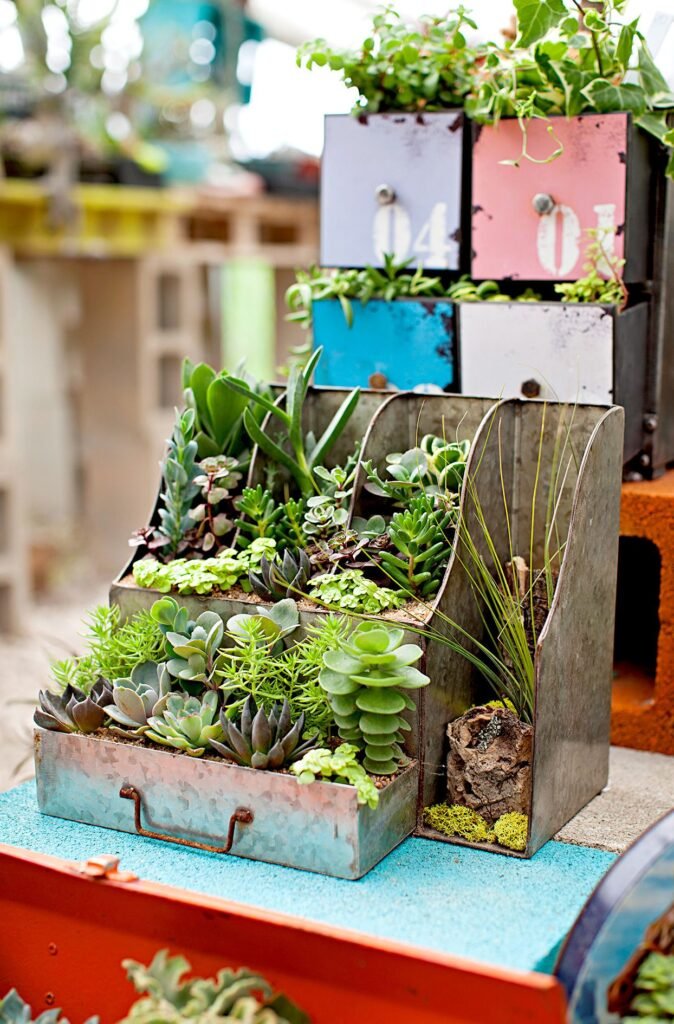
Old wooden crates, drawers, ladders, or vintage window frames can be turned into charming succulent displays.
This rustic, farmhouse approach is perfect for a cozy, personal touch. It also supports sustainable living by repurposing what you already have.
Indoor Lighting Tips for Wall Gardens
Succulents love light, but not all apartments get tons of sun. The good news? Many succulents adapt well indoors.
Best Light Practices:
- Use south- or west-facing walls when possible.
- For lower light, choose Haworthia, Gasteria, or Snake Plant.
- Install grow lights above your display if needed. A full-spectrum LED light mimics sunlight and promotes healthy growth.
- Rotate your frame every few weeks to avoid leaning or etiolation (stretching).
Watering Vertical Succulent Displays
Watering is the trickiest part of wall-mounted plant care. Unlike regular pots, water can’t drain out easily, and soil tends to dry faster.
How to Water Wisely:
- Use a spray bottle to target the base of each plant.
- Water every 2–3 weeks depending on humidity and season.
- Let the soil dry out completely before the next watering.
- Tilt or lay frames flat briefly while watering to help roots absorb moisture.
Pro Tip: If your planter has no drainage, be extremely cautious. Overwatering is the most common mistake with indoor succulent wall decor.
Step-by-Step DIY Succulent Wall Frame
Want to build your own living artwork? Here’s a beginner-friendly method.
Materials Needed:
- Shadow box frame (at least 2” deep)
- Landscape fabric
- Succulent soil mix (cactus soil + perlite)
- Wire mesh
- Staple gun and scissors
- Succulent cuttings or small plants
Instructions:
- Line the back of the frame with landscape fabric.
- Fill with well-draining soil.
- Secure wire mesh across the front.
- Cut holes in mesh and insert succulent cuttings.
- Lay flat for 1–2 weeks to allow rooting.
- Hang your wall art and enjoy your living masterpiece.
Where to Display Your Succulent Wall Decor
Succulent walls are incredibly flexible and can bring greenery into areas you might not think to use for plants.
Living Room
A popular choice for a large, framed succulent wall. Position it above a couch, fireplace, or console table for visual impact. It becomes a living conversation starter and instantly elevates your decor.
Bedroom
Soften your personal space with muted greens and pastel-toned succulents. Use smaller planters above your headboard, or add a vertical frame beside your vanity or reading nook for a calming vibe.
Home Office
Plants boost focus and reduce stress—so why not create a mini succulent wall behind your monitor? It adds color to Zoom calls and keeps the space feeling fresh without cluttering your desk.
Kitchen
Use compact succulent pockets on a backsplash wall or by the breakfast nook. Mix in edible plants like rosemary or thyme if you want function alongside beauty.
Bathroom
Only some succulents like humidity, but with good ventilation, varieties like Haworthia and Burro’s Tail can thrive here. Install a small vertical planter near a window or shelf.
Entryway
A wall-mounted succulent frame in your entry sets a friendly, welcoming tone. Guests will be impressed by your eye for detail and greenery right from the doorstep.
Wall Decor Styles That Work in 2025
Your succulent wall should reflect your personal style. Here’s how different aesthetics pair with plant decor:
Modern Minimalist
Use uniform white or black pots, geometric frames, and clean lines. Stick to green and silver tones like Echeveria, Haworthia, or Graptoveria. Perfect for sleek apartments or modern offices.
Boho Chic
Add texture using macrame hangers, driftwood shelves, and trailing varieties like String of Pearls. Mix terra cotta and ceramic pots with earthy colors and natural fibers.
Rustic Farmhouse
Use reclaimed wood, galvanized metal trays, or chicken-wire frames. Choose warm-toned succulents like red-tipped Sempervivum or Panda Plant for contrast.
Industrial Urban
Blend metal grids, concrete pots, and darker, moodier greens. This style thrives on contrast—combine sculptural succulents with raw textures like exposed brick or dark paint.
Common Mistakes to Avoid
- Overwatering – Always let soil dry completely.
- Low light – Stretchy, pale succulents are unhappy ones.
- Heavy soil – Use cactus mix, not potting soil.
- Forgetting to rotate – Uneven light leads to lopsided plants.
- Neglecting root space – Don’t overcrowd planters.
Apartment Safety – Cacti, Kids, and Pets
Vertical succulent decor helps solve one major problem: keeping plants away from curious hands and paws.
Are Succulents Safe for Pets and Children?
Most succulents are non-toxic, but a few are mildly toxic or can cause digestive upset. Aloe, Jade (Crassula), and Kalanchoe should be avoided if your pets are chewers. However, vertical installations greatly reduce accessibility.
Pet-Safe Succulent Choices:
- Haworthia
- Echeveria
- Burro’s Tail (Sedum morganianum)
- Sempervivum
- Gasteria
Kid-Friendly Decor Tips:
- Avoid spiny or sharp plants like Cacti near play areas.
- Mount frames well above reach.
- Use sturdy fixtures to prevent tipping.
- Opt for soft, trailing plants like String of Bananas for a playful look.
A wall display is not just beautiful—it’s safer for homes with pets and young children.
Seasonal Maintenance and Styling
Spring/Summer:
- Water slightly more often.
- Fertilize monthly with cactus food.
- Refresh topsoil or replace plants as needed.
Fall/Winter:
- Reduce watering frequency.
- Keep near windows for max sunlight.
- Clean dust from leaves and frames.
Styling Tip: Switch out pots or accent colors with the seasons for a fresh look without replanting.
FAQs
Q1: Can I use faux succulents for my wall decor?
Yes! Faux succulents are perfect for low-light or humid areas. They look realistic and require zero upkeep.
Q2: Do succulent wall frames need drainage holes?
It’s best if they do, but if not, use minimal watering and well-draining soil. Lay flat when watering to prevent moisture pooling.
Q3: How long do succulent walls last?
With care, they can thrive for years. Some trimming and replanting may be needed every 6–12 months, depending on growth.
Final Thoughts: Let Your Walls Bloom
There’s something incredibly satisfying about turning an empty wall into a living work of art. Trendy succulent wall decor is about more than looks — it’s about bringing calm, color, and creativity into your home.
Whether you’re an apartment dweller, new plant parent, or lifelong gardener, vertical succulent gardens offer a rewarding, stylish, and space-smart way to keep nature close.
So grab your frame, your favorite succulents, and let your walls bloom in 2025.
